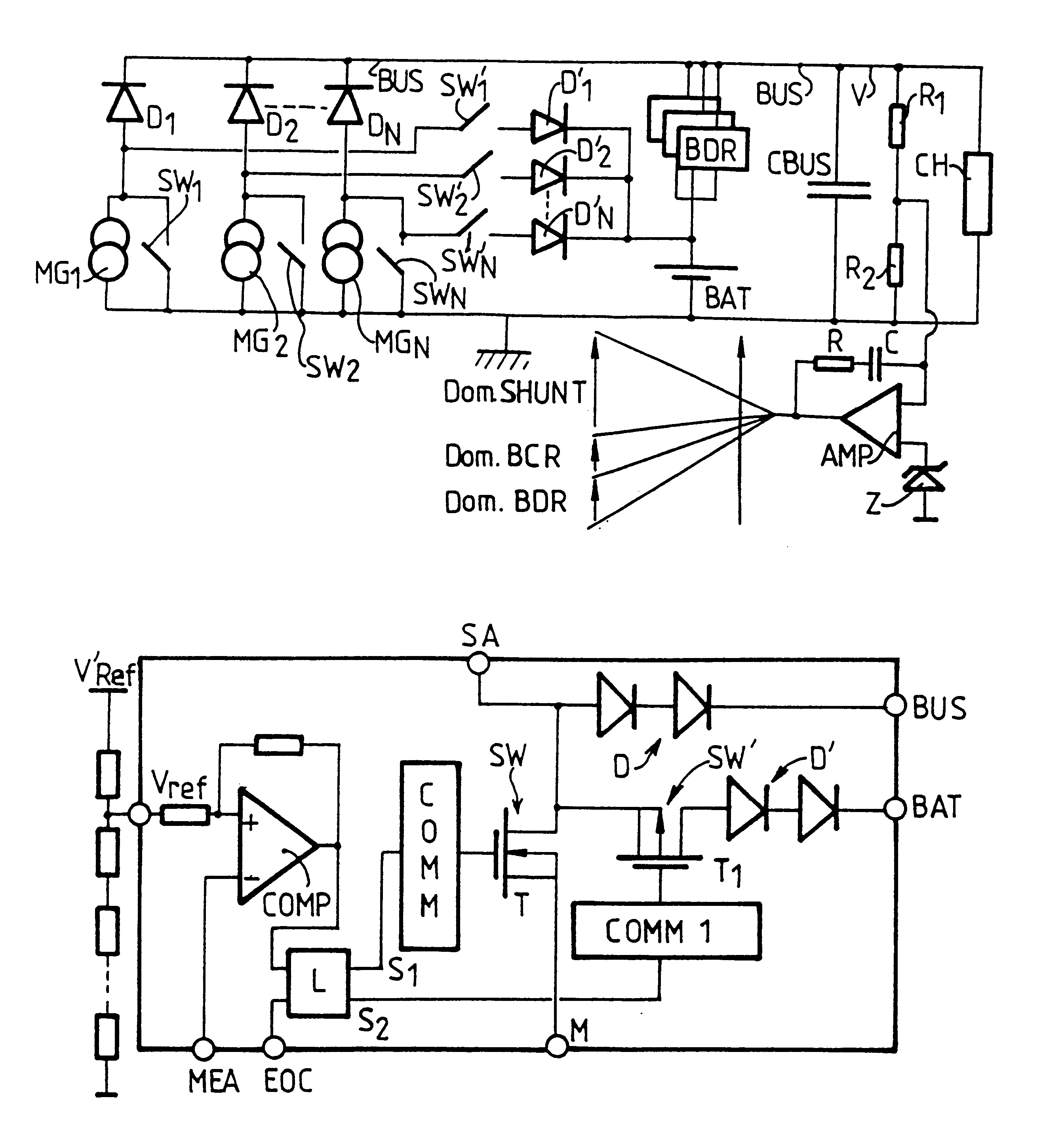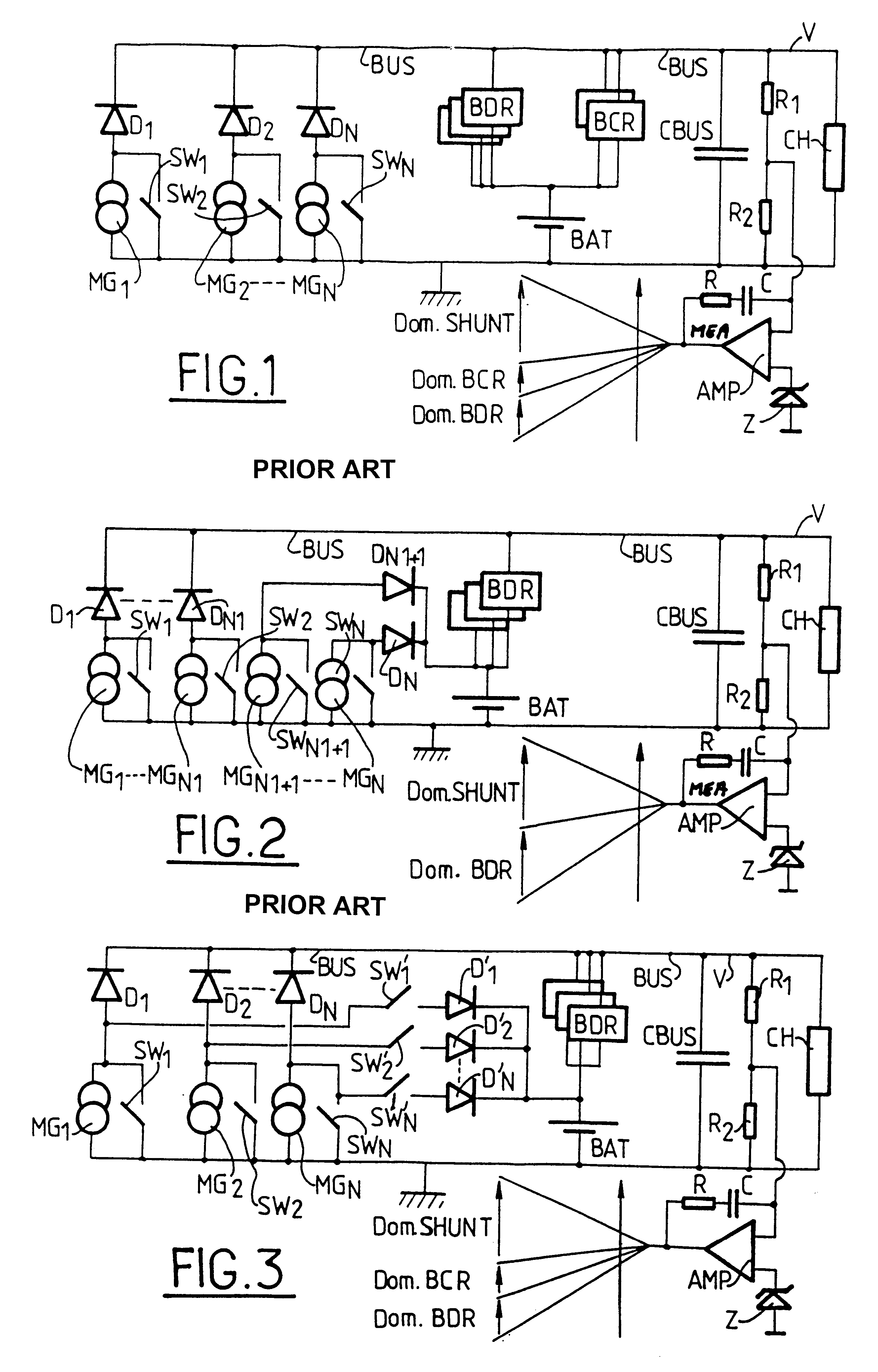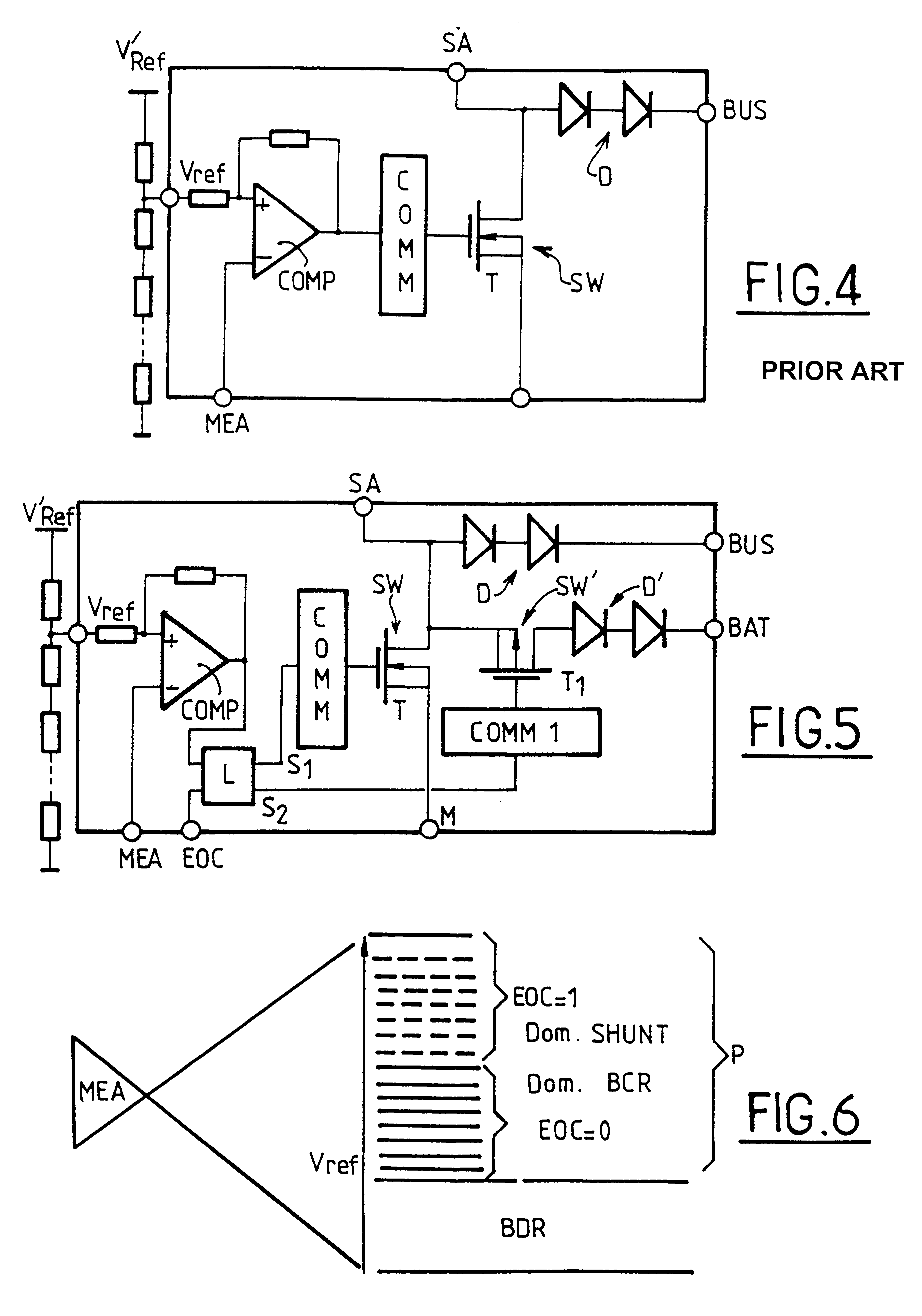Device for generating electrical energy for a power supply bus
a technology for power supply buses and generators, applied in secondary cells, process and machine control, instruments, etc., can solve problems such as inability to manage conflicts and inability to optimize operation
- Summary
- Abstract
- Description
- Claims
- Application Information
AI Technical Summary
Benefits of technology
Problems solved by technology
Method used
Image
Examples
Embodiment Construction
The topology shown in FIG. 1 which corresponds to the known three-domain concept, implements N generator module sections MG.sub.1, MG.sub.2, etc. MG.sub.N, each presenting in parallel a controlled shunt switch SW.sub.1, SW.sub.2, etc. SW.sub.N, and each module is coupled to a power supply bus BUS via a respective forwardly-conductive diode D.sub.1, D.sub.2, etc. D.sub.N. An electrical energy storage unit BAT comprising at least one battery is coupled to the bus BUS via a battery charge regulator BCR in parallel with a battery discharge regulator BDR. The bus BUS includes, in conventional manner, a capacitive element CBUS, and the bus BUS powers a load CH. A mean error signal MEA concerning the voltage V of the bus BUS compared with a reference voltage as given by a zener diode Z is delivered at the outlet of an integrating amplifier AMP. Depending on how high or low the signal MEA happens to be, the system operates either in a shunt domain (higher values) or in a battery charging do...
PUM
 Login to View More
Login to View More Abstract
Description
Claims
Application Information
 Login to View More
Login to View More - R&D
- Intellectual Property
- Life Sciences
- Materials
- Tech Scout
- Unparalleled Data Quality
- Higher Quality Content
- 60% Fewer Hallucinations
Browse by: Latest US Patents, China's latest patents, Technical Efficacy Thesaurus, Application Domain, Technology Topic, Popular Technical Reports.
© 2025 PatSnap. All rights reserved.Legal|Privacy policy|Modern Slavery Act Transparency Statement|Sitemap|About US| Contact US: help@patsnap.com



